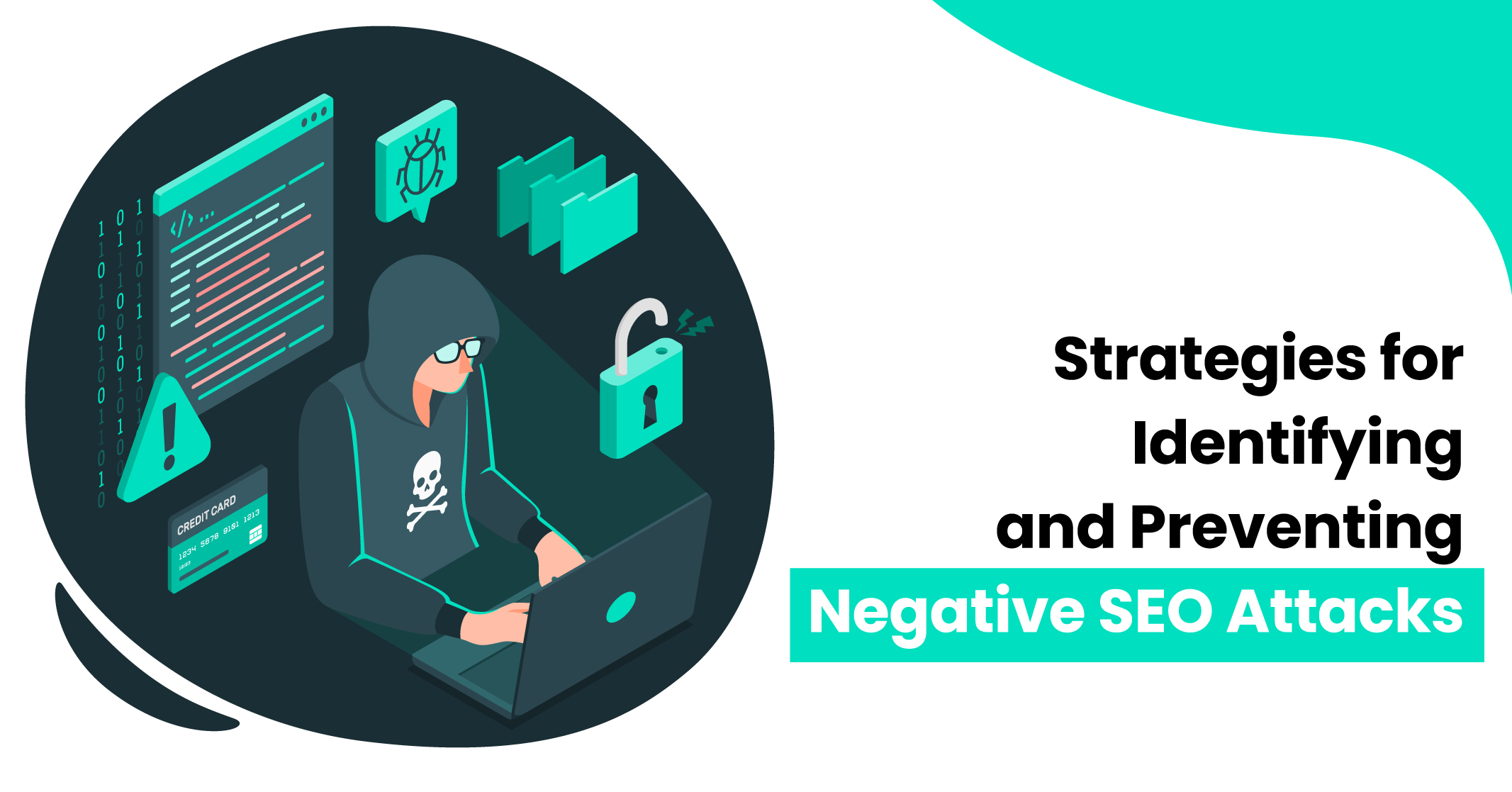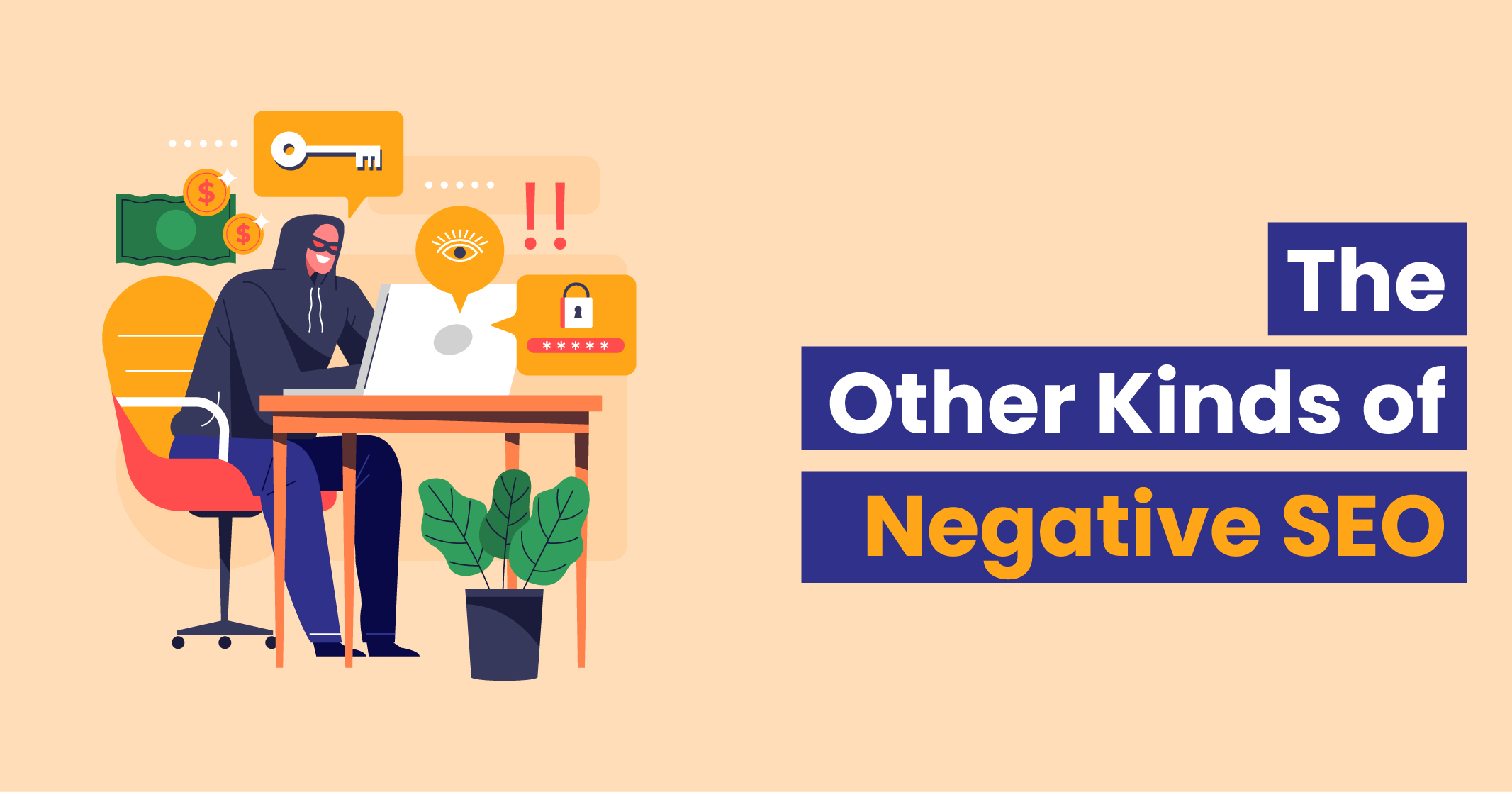I hope you enjoy reading this blog post.
If you want to get more traffic, Contact Us

Click Here - Free 30-Minute Strategy Session
Be quick! FREE spots are almost gone for this Month. Free Quote

Are you struggling to understand why your website’s organic search traffic has dropped suddenly in the past few months? Though rare, negative SEO could be the reason behind it.
Before diving into how to detect and defend against negative SEO, let’s take a moment to understand what it means. Negative SEO refers to the practice of using unethical tactics to harm a competitor’s website’s search engine ranking.

Click Here – Free 30-Minute Strategy Session
Be quick! FREE spots are almost gone for this Month
In this blog, we’ll be discussing the various negative SEO strategies and techniques that are commonly used, along with tips on how to identify and protect your website from such attacks.
Learn More: The Negative Impacts of Duplicate Content on SEO
Negative SEO is an unethical and potentially illegal strategy that involves a competitor using black-hat tactics to harm the search engine ranking of another website or web page. Such practices are considered unethical and can cause significant damage to the reputation and ranking of a targeted website.
Building low-quality links at a large scale is the most common and basic form of negative SEO as it’s relatively cheap and easy to do. Several websites sell spammy backlinks in bulk for a minimal cost.
Google has officially stated that negative SEO doesn’t affect a website’s ranking. However, many SEO experts believe that this statement shouldn’t be taken at face value. In our opinion, negative SEO can still work, but it’s not as severe as it used to be.
This is because Google has become more adept at identifying and disregarding spammy backlinks. While negative SEO is still a concern, website owners can take several steps to protect themselves from such attacks.
Penguin is a part of Google’s core algorithm that aims to detect link spam. Earlier, if Penguin detected an influx of spammy links to a website, the website would be demoted in the organic search results, resulting in a loss of rankings and traffic.
However, Google released Penguin 4.0 in 2016, which no longer demotes entire websites. Instead, Google attempts to devalue link spam by identifying and ignoring low-quality links. In other words, Google makes sure that spammy links don’t impact a website’s ranking.
Gary Illyes, a Google Webmaster Trends Analyst, explained the difference between demoting and devaluing. Demoting means adjusting the rank of a website while devaluing means identifying spam and making sure it doesn’t impact the website’s ranking.

Penguin was previously used by Google to demote entire sites due to link spam. This means that if a page on your site was targeted in a negative SEO attack, the entire site could be penalized, and rankings would suffer across the board.
But with the release of Penguin 4.0, things have changed. Google announced that Penguin is now more granular and will devalue spam by adjusting ranking based on spam signals, rather than affecting the ranking of the entire site.
Although this may seem confusing, Google clarified that this means Penguin affects finer granularity than just sites. This doesn’t necessarily mean it only affects pages, though.
So, what does this mean for negative SEO attacks? Penguin attempts to devalue unsophisticated link spam, which is commonly used in negative SEO attacks. However, Penguin still seeks to penalize those who intentionally build manipulative links algorithmically.
While the chance of a negative SEO attack being successful is lower than in the past, it can still be effective. If Penguin sees link spam, it may decide to demote the page to which the manipulative links point, a subsection of the website, or the entire website.
Negative SEO is like cheating in a competition, and Google won’t tolerate it. That’s why the search engine giant introduced Penguin 4.0. It aims to identify and devalue link spam instead of penalizing entire websites for a few bad links.
Why is this important? Well, Google wants to maintain the trust of its users. If spammy websites consistently rank at the top of search results, users will lose trust in Google. And if users stop using Google, the company will lose its primary source of revenue.
That’s why Google invests heavily in fighting negative SEO tips. The search engine giant wants to ensure that the best content always rises to the top of the search results, regardless of any attempts to manipulate the rankings. By doing so, Google can maintain the trust of its users and continue to be a profitable business.
So, if you’re a website owner, the message is clear: focus on creating high-quality content and building natural links to your site. Don’t resort to negative SEO tactics to try to beat your competitors. In the long run, it’s not worth it.

While link-based negative SEO attacks may be less of a concern now, it’s important to note that not all negative SEO tactics involve links. Hackers can infiltrate your website and insert spammy links or post fake negative reviews about your business. This is why detecting and deflecting negative SEO attacks requires a comprehensive approach to your online security.
It’s no longer enough to simply disavow links from dubious websites. You need to monitor your entire online presence and take measures to protect yourself from any form of attack. This includes implementing positive security measures such as updating your software, using strong passwords, and regularly backing up your website.
By taking a proactive approach to security and staying vigilant for any signs of negative SEO, you can protect your website and maintain your rankings in the search results. Don’t let unscrupulous competitors or malicious actors bring you down – take action to safeguard your online presence today.
Learn More: How to Make Google Disavow Tool to Work for You?
In the next section, we’ll dive into the seven most prevalent types of negative SEO attacks, discussing how to detect and defend against them.
We’ll begin by exploring the first and most associated negative SEO tactic: spammy link building.
Negative SEO refers to the practice of intentionally harming a competitor’s website by implementing unethical SEO techniques. These techniques can include building spammy or low-quality links, creating duplicate content, or hacking the website. A negative SEO attack can hurt a website’s rankings and traffic and can even lead to manual penalties from Google.
To detect a negative SEO attack on your website, you can use various methods like monitoring new backlinks pointing to your site using Backlinks alerts. You can also check the Anchors report and Referring IPs report to find attempts to manipulate your anchor text ratio or links from many referring domains on the same subnet IP, respectively.
To fight back against a negative SEO attack, you can disavow spammy links. However, since the introduction of Penguin 4.0, which devalues link spam and runs in real-time, it is not necessary to disavow links unless you first experience the negative effects of them (i.e., ranking/traffic drops).
If you have detected a negative SEO attack on your website, specifically focusing on a fake link removal request is an effective way to remove spammy or low-quality links that are hurting your website’s search engine rankings. Here are the steps to request a fake link removal:
Content scraping refers to the act of copying and publishing your content word-for-word on another website without your permission. Although it is mostly done unintentionally by individuals looking to acquire free content, it can still have adverse effects on your site.
When content is duplicated across multiple sites on the web, Google frowns upon it. They usually select one version to rank and ignore the others. Syndicating your content on high-authority sites with a link back to your original post is not a problem, but content scraping without giving credit to the source can be detrimental.
Ideally, Google should be able to identify your site as the primary source of the content. However, this is not always the case, especially if the content is scraped and published on a reputable website. In such cases, Google may view the authority of the website as a sign that the content originated from there.
Learn More: The Negative Impacts of Duplicate Content on SEO
Another common tactic used by attackers is to create false URL parameters for your blog content.
Here are some ways to detect and avoid this type of attack:
By following these steps, you can help protect your website from negative SEO attacks and maintain your search engine rankings.
Learn More: URL Parameters – The Ultimate Guide
Fake reviews are one of the most common tactics used in negative SEO attacks. They are designed to harm a business by damaging its online reputation and driving away potential customers.
Ways to detect fake reviews:
Ways to Avoid Fake Reviews:
In conclusion, fake reviews are a common tactic used in negative SEO attacks. However, by monitoring your reviews, encouraging genuine reviews, and reporting fake reviews, you can protect your business’s online reputation and prevent damage from fake reviews.
Site hacking is a common tactic used by malicious actors to carry out negative SEO attacks. The goal of site hacking is to gain unauthorised access to your website and manipulate your site’s content or functionality to harm your site’s search engine rankings or to carry out other malicious activities such as spreading malware or stealing user data.
Here are some ways to detect and avoid site hacking as a negative SEO attack:
By taking these steps, you can reduce the risk of site hacking as a negative SEO attack and keep your website and its users safe.
DDoS (Distributed Denial of Service) attacks can be another form of negative SEO attack, where a malicious actor tries to overload a website’s server by sending a flood of traffic, rendering the website inaccessible to its users.
The effects of a DDoS attack can be damaging to a website’s reputation, lead to lost revenue, and even cause long-term damage to the website’s search engine rankings. Therefore, website owners need to be aware of the signs of a DDoS attack and take measures to prevent and mitigate them.
Detection:
Prevention and Mitigation:

LEAVE A REPLY